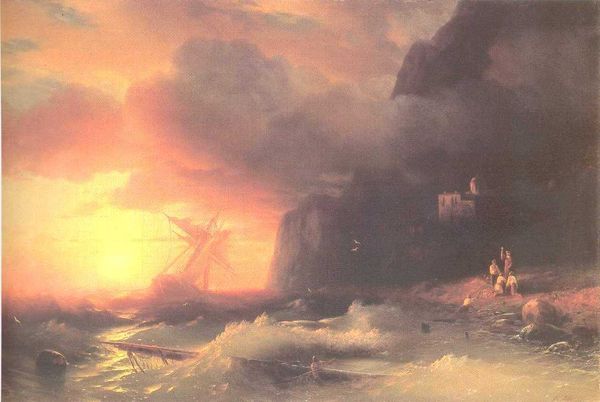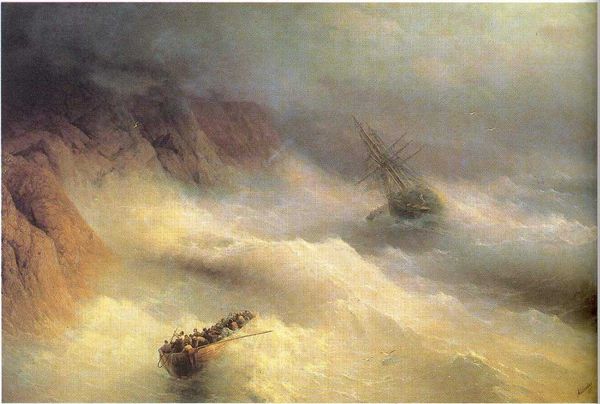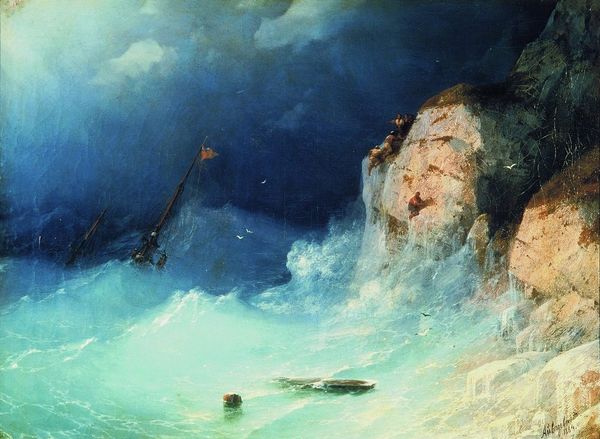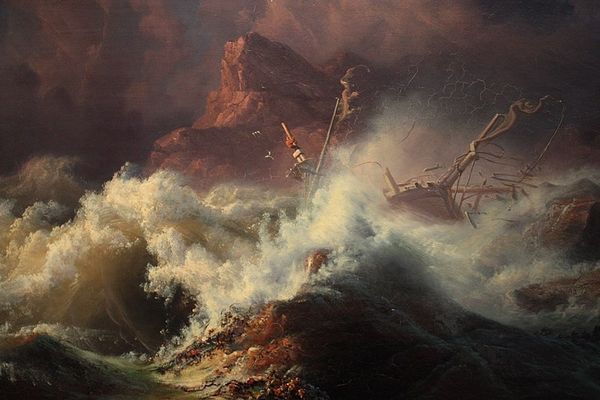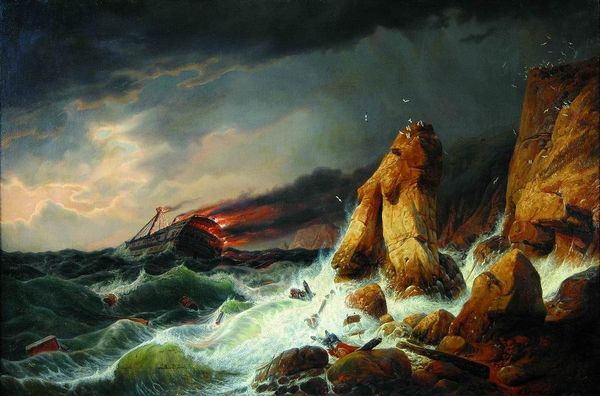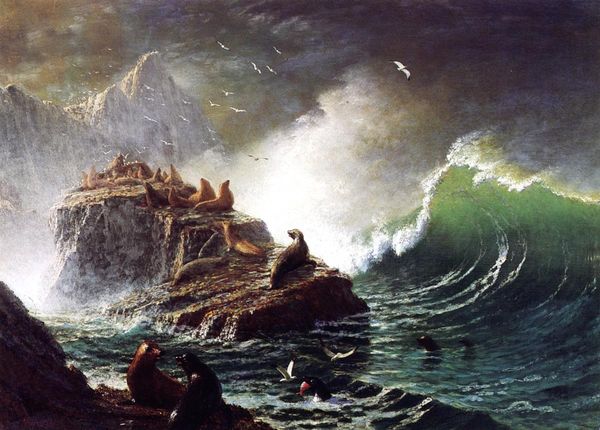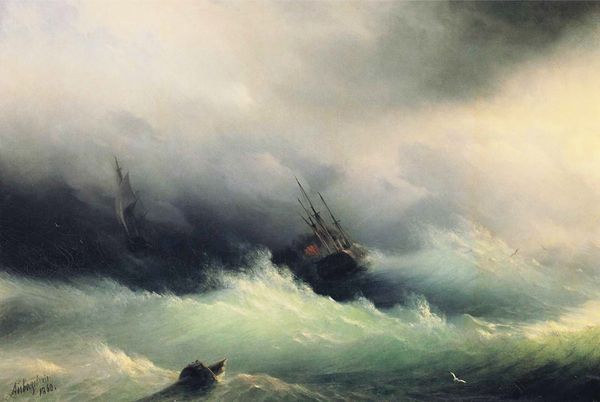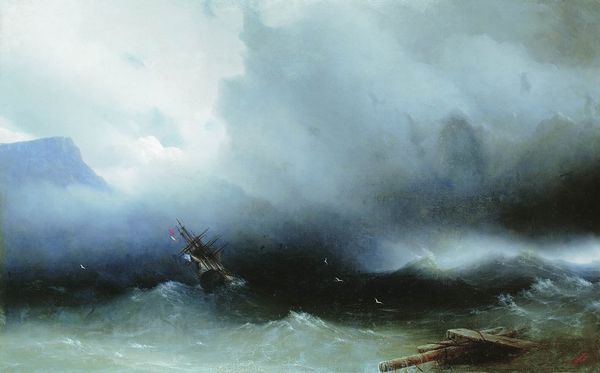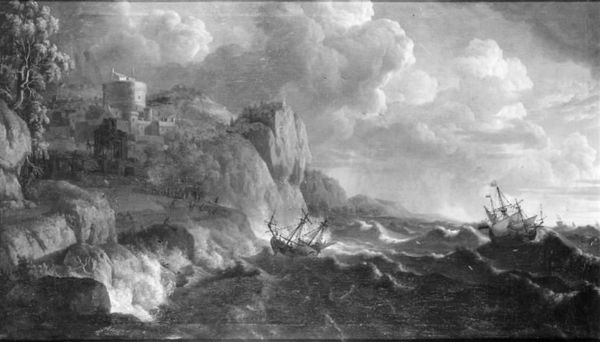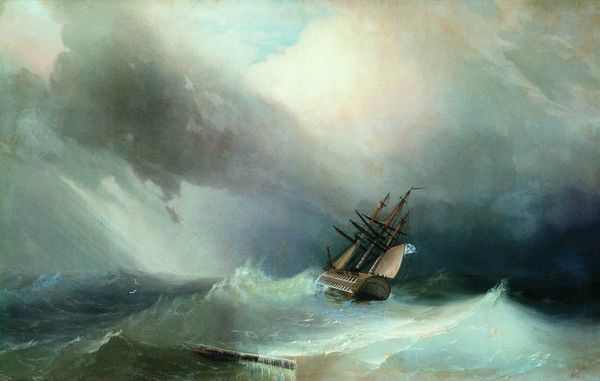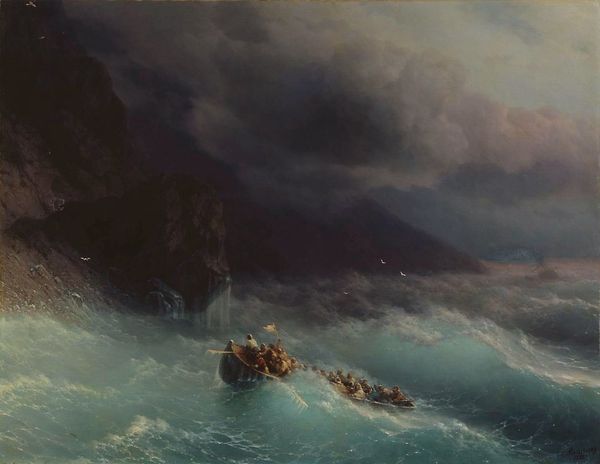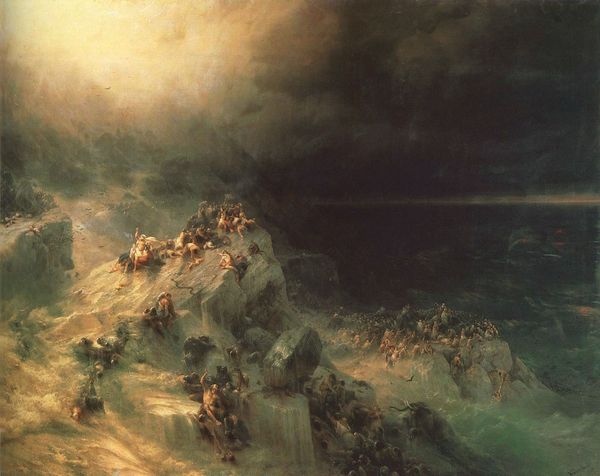
The Shipwreck 1876
0:00
0:00
ivankonstantinovichaivazovsky
Aivazovsky National Art Gallery, Feodosiya, Ukraine
Dimensions: 136 x 170 cm
Copyright: Public domain
Editor: Ivan Aivazovsky's "The Shipwreck," painted in 1876. The oil paint seems to swirl, conveying the chaos of the scene. What really strikes me is the precariousness – a tiny boat tossed about in this vast, violent sea. What do you see in this work? Curator: What I see is a testament to the power of material conditions. Look at the thick application of the oil paint, how it mimics the turbulent water. Aivazovsky wasn't just painting a scene, he was building it, laboring to represent the overwhelming forces of nature. Editor: So, you're saying the painting's value isn’t just in the scene, but in the act of creation? Curator: Precisely. Consider the canvas itself, the pigments used. These materials, sourced and processed through complex trade networks, were essential to creating this vision of nature's raw power. Aivazovsky is showing the real struggle in both the artwork and those facing that shipwreck. It's about materiality, labor, and our constant negotiation with the physical world. Editor: I hadn't really thought about that connection before. Seeing the work as an object resulting from physical processes gives me a completely different viewpoint on the piece, and also it connects it better to society and human condition. Curator: Exactly! Think of the artist's studio, the tools, the very act of applying paint to canvas. These mundane acts, transformed by skill and intention, reveal deeper truths about our relationship with our world. Editor: Thank you! This gives me a lot to think about regarding the materials that artists use and how it affects the meaning. Curator: You're welcome! Exploring art through its materials opens up exciting new avenues of interpretation.
Comments
No comments
Be the first to comment and join the conversation on the ultimate creative platform.
